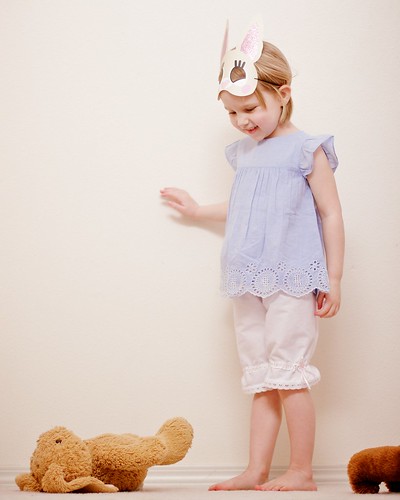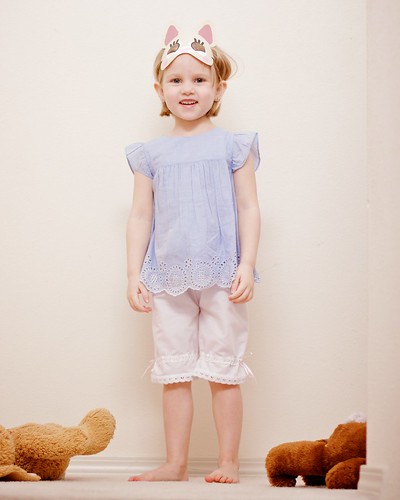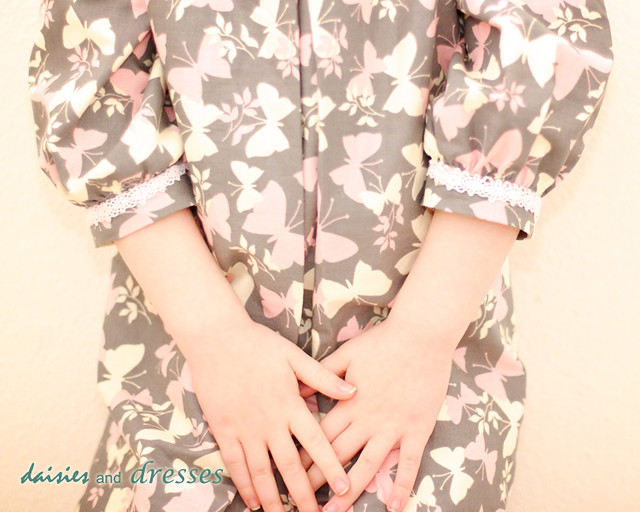The second Sally Dress I made, I sized up on. This is a size 3 and the other dress is a size 2. I sized up because the 2 fit perfectly and was just a little difficult to get off and on. This 3 has a bit more room. I love, love, love this dress. I think this is my favorite thing in her closet.
It is a little bit wide in the shoulders, but it stays on and it's comfortable. I made it from a mid weight cotton and it's perfect for year round. There is enough room underneath to layer it over a top but it's thin enough easily pair with a cardigan (which I did).
Miss loves that she can carry treasures with her, such as her little pet fox, wherever she goes. We threw on a cardigan and Mary Janes and took a trip to the park on the first sunny day in what felt like ages.
Miss and foxy were the best of friends.
They went down slides
Rode dinosaurs
Watched clouds
and read books together. Even though you can't see him in this photo, foxy is helping her pick out a book. He's just in the other pocket.
Fabric: American Jane Potluck, Yellow Chicks
Sweater: H&M
Tights: Next Direct
Shoes: Primigi
Glasses: Claires. These are fashion glasses, not prescription.

.jpg)







.jpg)























